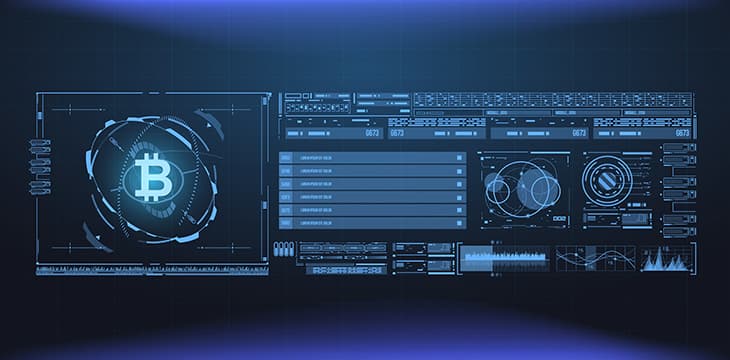|
Getting your Trinity Audio player ready...
|
It seems like a simple question, but it’s one the BTC crowd has trouble answering: What do non-mining nodes actually do to secure the network? On Twitter (NASDAQ: TWTR), these past few weeks, attempts to gain a serious answer to the question have resulted in the usual evasion and name-calling. Perhaps it’s because there is no satisfactory answer.
Dr. Craig S. Wright has been pointing out for many years that non-mining “validating” nodes that monitor the blockchain without actually producing transaction blocks on the blockchain don’t have any function. BTC proponents, on the other hand, frequently hype the role of these small or “home” nodes, saying they play an important role in BTC’s “decentralization.”
How, exactly? It’s a simple question but difficult for BTC supporters to answer. Instead, we get responses like this:
Send one of your fraudulent BSV blocks over to our nodes and find out.
— Jameson Lopp (@lopp) October 13, 2022
BTC/Bitcoin Core proponents love to evade fundamental questions about Bitcoin by claiming their opponents are frauds, or shouldn’t be taken seriously. Jameson Lopp’s response to Dr. Wright’s question is one example of this attitude. It’s far easier to mock opponents and call them names than it is to engage them in rational debate. When a meaningful question arises, just dodge it and insinuate the questioner is a crackpot—this way, you’ll never have to address the issue.
It’s a common tactic on social media and one the BTC crowd has deployed for years. They have years of form here, first by censoring opposition on popular forums like Bitcointalk and Reddit, followed by ongoing campaigns of character assassination and discrediting individuals.
The problem with this propaganda approach is that people begin to see through the slogans and sniping, and look for information with a greater signal-to-noise ratio. Social media is just one theater for ideological battles, and many of the major decision-makers in the corporate and government worlds prefer to avoid it.
Sorry I don't have any fraudulent blocks
Maybe you can answer the question. I know you're such a busy and important man Mr @lopp.
But, wouldn't you love to help me and have me understand your system so that I could be onside?
What do these home user nodes do?
Simple question.
— Dr Craig S Wright (@Dr_CSWright) October 13, 2022
Background to the node question
The debate over whether non-mining “home” or “validating nodes” play any role in securing the Bitcoin network has been raging for years. It arose from the wider “small-blocker” versus “big-blocker” schism that reached a boiling point in mid-2017. This debate saw the Bitcoin network eventually split into two separate blockchains—one with 1-4MB transaction blocks and adding segregated witness (SegWit), known today as BTC, and another known as BSV which maintained the original protocol rules and focused on increasing the transaction block size.
The role of non-mining nodes grabbed the spotlight in 2017 with the “user-activated soft fork” (UASF) campaign. It sought to demonstrate that end-users of the Bitcoin network could wield power over the miners who actually created the transaction blocks, simply by signaling support for a rule change loud enough to force actual miners into compliance.
According to some, this tactic is effective: this video attempts to re-write history from a heavily-biased “small blocker” perspective, suggesting it represented a victory of users over miners for control of Bitcoin (note: it also uses the tiresome tactic of mentioning BSV, then dismissing it with hand-wave).
By themselves, “validating nodes” can’t actually do anything. Even BTC Core proponent Jimmy Song admitted in this 2017 article explaining the UASF that non-mining nodes can’t actually do anything by themselves, saying, “short of a switch to proof-of-stake or something similar, there really isn’t a way for any sort of fork to be triggered by anyone but a miner.”
Other than the “victory” of the threatened UASF in 2017, note the UASF was only ever threatened, not used, there’s very little to show that non-mining, “validating” nodes do anything other than consume electricity and make their operators feel good about themselves.
Those who did attempt to answer Dr. Wright’s question could only come up with vague assertions about “network resiliency” and “independently verifying” transactions… without explaining how this even happens.
I am only starting.
One question at a time.
Every myth destroyed
— Dr Craig S Wright (@Dr_CSWright) October 14, 2022
The only way to counter BTC’s misleading claims, ad-hominem arguments, and censorship on social media is to continue drawing attention to it. Dr. Wright is doing so by asking hard questions about BTC and its structure, revealing its weaknesses. Supporters of Bitcoin SV (BSV), the only blockchain network still running Bitcoin’s original protocol rules, should continue to demand proper answers.

 12-13-2025
12-13-2025 





